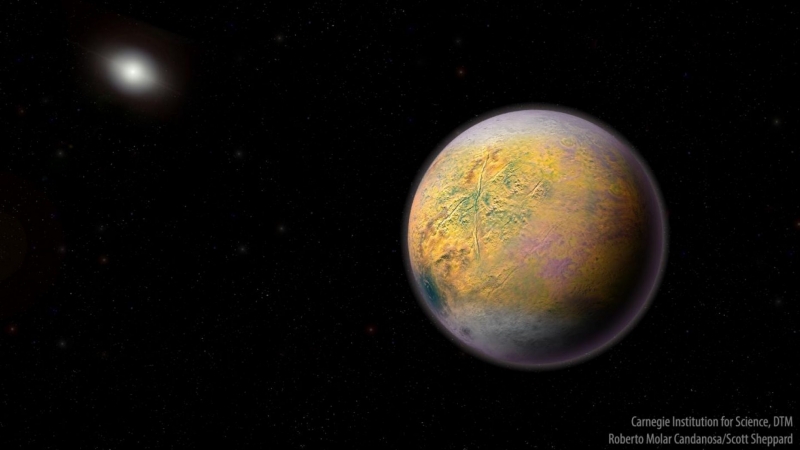The new discovery, known as 2015 TG387, was found during the continual hunt for dwarf planets and Planet Nine, also known as Planet X, a planet that NASA has acknowledged may exist and may have a mass 10 times greater than Earth.
The Goblin
2015 TG387 (the object was nicknamed "The Goblin" because of the TG designation and the October 2015 discovery date) is about 80 astronomical units away from the Sun, nearly 2.5 times further than Pluto is from the Sun. An astronomical unit is roughly the distance between the Earth and the Sun, or approximately 93 million miles.
It's the prospect of potentially finding Planet Nine that has researchers salivating about 2015 TG387 and other celestial objects like it.
"These distant objects are like breadcrumbs leading us to Planet X," said the study's lead author, Scott Sheppard, in a statement.
Sheppard, who works at the Carnegie Institution for Science in Washington, D.C., added: "The more of them we can find, the better we can understand the outer Solar System and the possible planet that we think is shaping their orbits--a discovery that would redefine our knowledge of the Solar System's evolution."
It's likely that 2015 TG387 is a dwarf planet the researchers said, because "it has a diameter near 300 kilometers (186.4 miles)." It also reaches perihelion in a part of the sky similar to 2012 VP113, Sedna and other "extremely distant trans-Neptunian objects."
2015 TG387 was first discovered in October 2015, but it took the researchers three years to get its orbit correct. It goes around the Sun on a "very elongated orbit and never comes closer to the Sun, a point called perihelion, than about 65 AU," the researchers said in the statement. In other words, it takes around 40,000 Earth years for it to travel once around the Sun, University of Hawaii's David Tholen said, adding that "there could be thousands of small bodies like 2015 TG387 out on the Solar System's fringes, but their distance makes finding them very difficult."
Planet Nine
In October 2017, Caltech planetary astrophysicist Konstantin Batygin, who worked with Brown, said that there are "five different lines of observational evidence" that point to the existence of Planet X.
The five lines of evidence are:
Six known objects in the Kuiper Belt, all of which have elliptical orbits that point in the same direction.
The orbits of the objects are all tilted the same way; 30 degrees "downward."
Computer simulations that show there are more objects "tilted with respect to the solar plane."
Planet Nine could be responsible for the tilt of the planets in our solar system; the plane of the planets orbit is tilted about 6 degrees compared to the Sun's equator
Some objects from the Kuiper Belt orbit in the opposite direction from everything else in the solar system.
"No other model can explain the weirdness of these high-inclination orbits," Batygin added. "It turns out that Planet Nine provides a natural avenue for their generation. These things have been twisted out of the solar system plane with help from Planet Nine and then scattered inward by Neptune."
It is unclear at this point how much Planet X's gravitational pull affects 2015 TG387's orbit.
"What makes this result really interesting is that Planet X seems to affect 2015 TG387 the same way as all the other extremely distant Solar System objects," said Northern Arizona University astronomer Chad Trujillo in the statement. "These simulations do not prove that there's another massive planet in our Solar System, but they are further evidence that something big could be out there."
In October 2017, NASA released a statement saying that Planet Nine may be 20 times further from the Sun than Neptune is, going so far as to say "it is now harder to imagine our solar system without a Planet Nine than with one."
More about: #Planet
















































